A few weeks ago my wife and I took a very on-brand (for me) daytrip to Maryland. We visited a farm winery in Montgomery County’s Agricultural Reserve, a neat experiment in farmland preservation in a heavily suburban county; had dinner at a restaurant in a New Urbanist-style mixed-use development; and visited the National Capital Trolley Museum in Silver Spring—the highlight of the day.
I’ve been meaning to go there for awhile, but it’s only open on Saturdays, and my wife generally has no interest in this sort of thing. So I haven’t gone, because I don’t want to leave her alone on a weekend, and I couldn’t go on a workday. But she knew I wanted to see it, we were in Maryland anyway, and she asked if I wanted to go there in the afternoon. I wouldn’t say no.
I wrote last week about trolleys for The Spectator World, inspired by this museum visit:
Many Americans today see trolleys as expensive boondoggles (which some modern vanity projects are), or vaguely suspect European imports. But Europe simply kept more of them intact. More than a century ago in America, the ubiquitous trolleys didn’t have the political valence that mass transit does today. They were just a way to get around.
More:
Largely but not entirely built by real-estate speculators, [trolleys] branched out all over American metro areas and beyond in the late 19th and early 20th centuries. Urban and suburban trolley networks were often larger than whatever transit network exists today. In 1926, for example, the Los Angeles metro area, of all places, had, due to its trolleys, one of the largest mass transit systems in the world. But they also ran in rural areas that today have virtually no transit service, often connecting smaller cities that once held more economic importance. Consider, for example, the 32-mile Pennsylvania line running through the little village of Riegelsville, as it connected Doylestown with Easton.
Check out the piece, which ends with a description of an actual trolley ride, included in the museum admission. They have a loop of track and overhead wire that runs around the museum, with a car barn built in, and it takes you out into the forest behind the building. Except for the creaking of the antique trolley they happened to be showing that weekend, it’s pretty quiet out there. The grass comes just about up to the tracks; the trees are just feet away. You’re really just in the middle of the forest, on a vehicle that can carry far more people than a car on a country road.
I’ve often been struck by how narrow the rights of way for these vehicles were, when I see trolley tracks converted into walking or biking paths. The infrastructure looks so unobtrusive. I felt that even more actually riding a trolley through the forest. It’s just so cool. It’s something we could have kept, and could do again.
Here’s what that ride looked like out the front of the trolley car:
Here’s the car barn/garage area on the side of the museum building:
And our antique trolley, a Belgian model over a century old, refurbished and used by a Florida resort and later sold to the museum:
Some of their other cars. If I remember correctly, the one on the left is from D.C.’s streetcar network.
We met a man who worked at the museum who knew all about D.C.’s streetcars, because he used to ride them as a little kid. But they radiated out from the city in every direction, covering routes that simply don’t exist as transit routes these days.
The most surprising was a Frederick-Hagerstown-Thurmont line in Maryland. Frederick is more than an hour northwest from Washington, D.C., and it’s sort of the last ring of the city’s commuting area. Hagerstown is still further west, and Thurmont is near the Pennsylvania border. Of course, the roads exist to replicate those old trolley routes. But the idea of being able to get from Baltimore or Washington to a place that remote, via public transit, is really incredible. And you could do it 100 years ago.
I snapped photos of a couple of exhibit posters about the old lines in the region. If you know the D.C. area, you’ll be surprised/dismayed at how large these networks were. Many of them are not names you associate with public transit today. Many are exclusive, heavily NIMBY neighborhoods. First a Virginia line, second a Maryland line.
I always get this combined feeling of wistfulness and hopefulness when I see stuff like this. I also took home a book on the D.C. streetcars. These networks, and the companies that ran them, weren’t perfect, nor were the regulations on them. They disappeared for what seemed like good reasons at the time. But people like them, and cities all over America are experimenting with bringing them back. I’d like to see that.
Related Reading:
Thank you for reading! Please consider upgrading to a paid subscription to help support this newsletter. You’ll get a weekly subscribers-only post, plus full access to the archive: over 400 posts and growing. And you’ll help ensure more material like this!

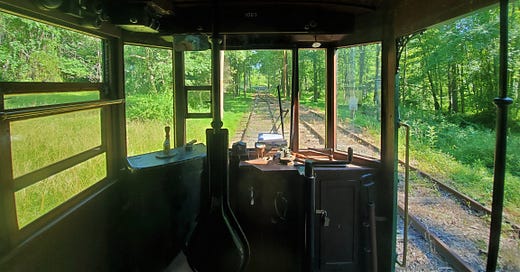



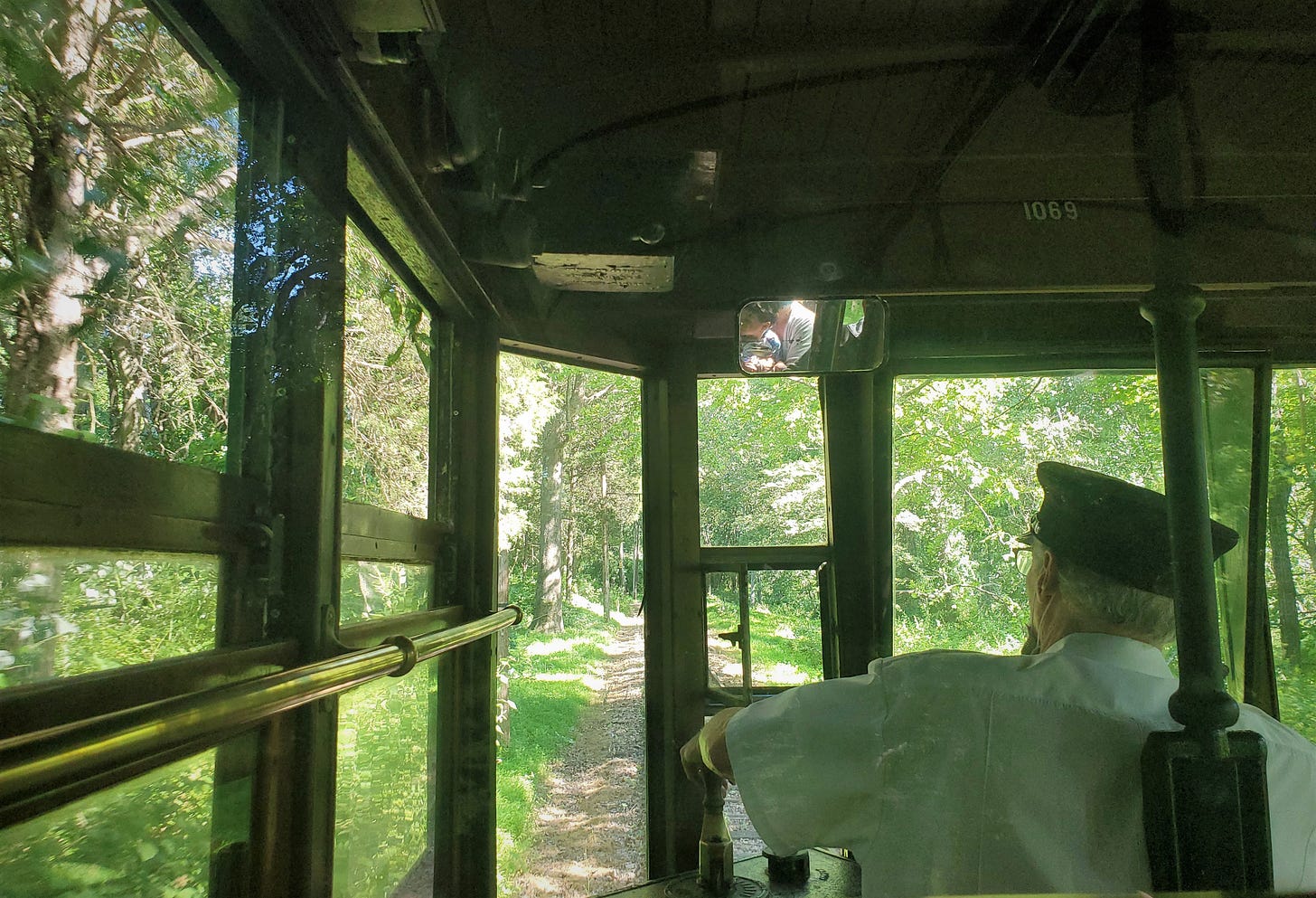
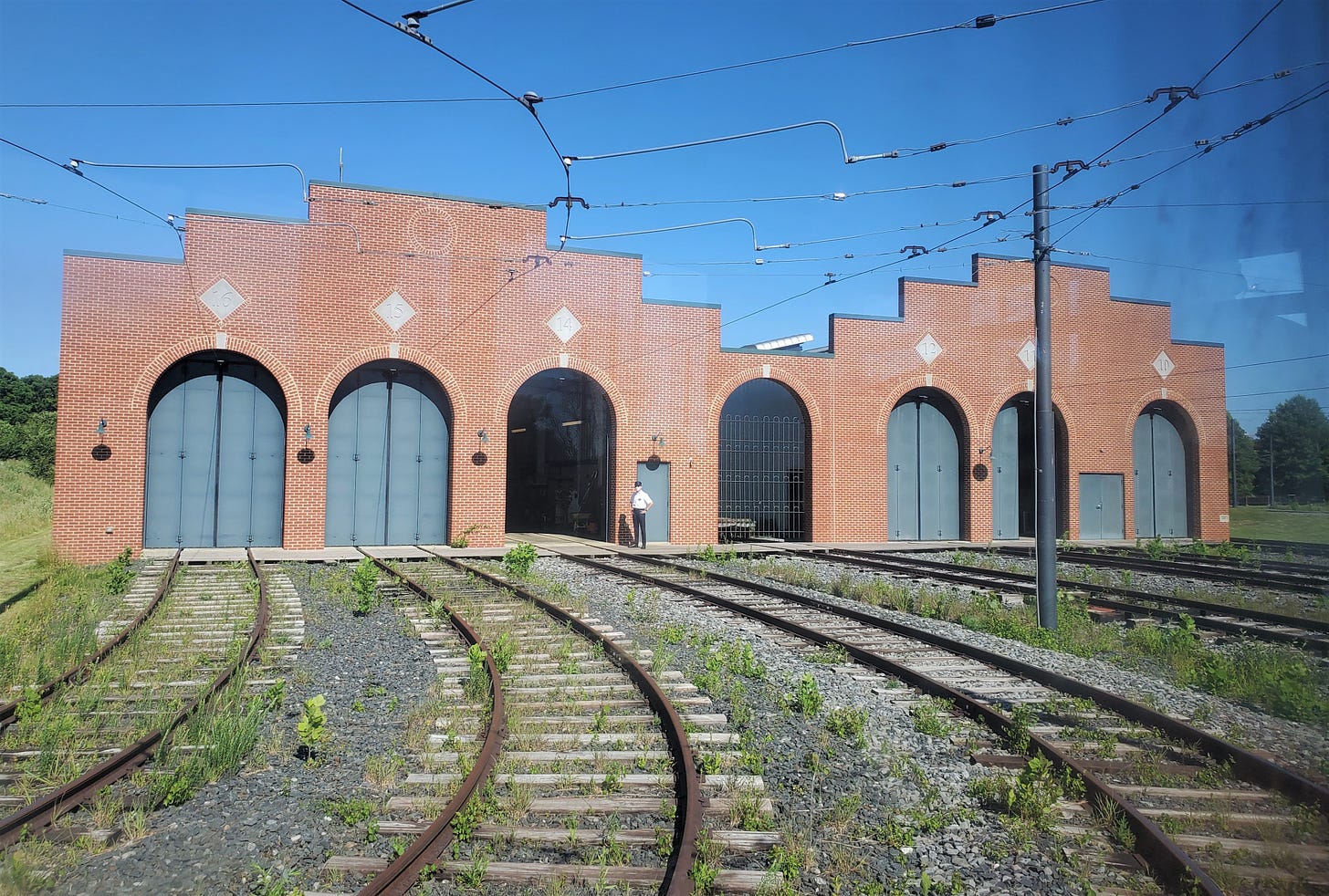
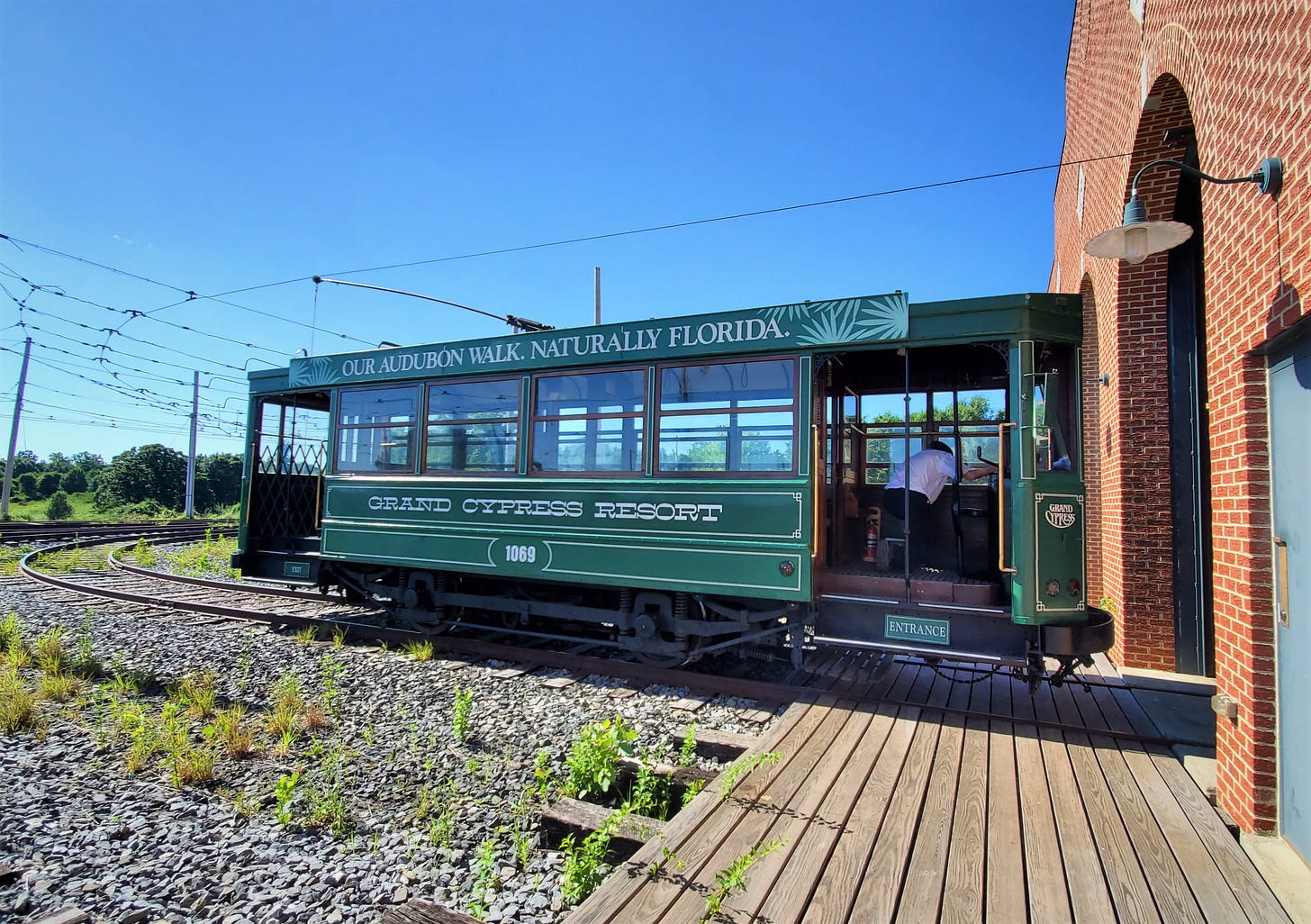
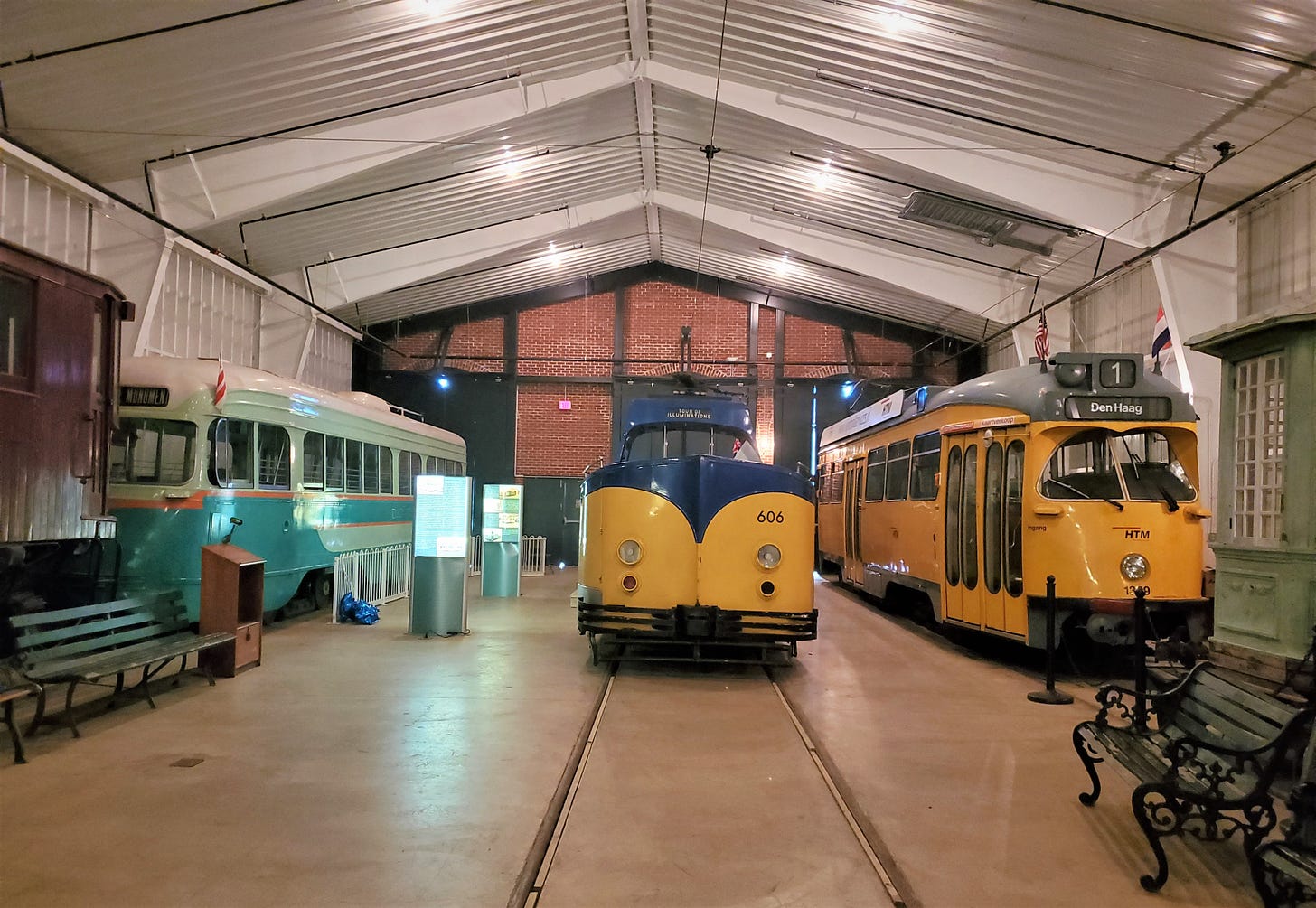


I grew up in the Bronx and well remember the Southern Blvd. trolley line whose run started "around the corner" from my apartment home. It was such fun! I loved watching the conductor walk up the aisle to flip the seats for the start of the reverse route! I am now 87 and still love trolley cars! Thanks for your essay!
I grew up in Northeast Ohio, hearing stories about the trolley line that once ran down the Main Street of my city (Euclid Ave). It started in Cleveland and ran all the way out to Painesville (about 30 miles). As a kid, our only option to get to Downtown Cleveland via public transit was to take our public bus line in Lake County to a shopping center at the border with Cuyahoga County, where you had to switch buses (and transit agencies) to a Downtown bus. It took more than 90 minutes. I always longed for the days of taking a trolley a few blocks or all the way into the city nonstop.